Catching Black Bream Margaret River (Locals Guide)
Hey, fishers! In this blog post, I’m going to tell you all about Black Bream, and how you can catch Black Bream when you visit us down in Margaret River.
I have lived in Margaret River since 2016, and I’m married to a mad keen fisherman, and we have 5 mad keen fisherman sons as well, so I’m literally not exaggerating when I say I know a thing or two about Black Bream fishing in Margaret River! I was trying to figure out how many bream I have caught/seen caught since we have lived in Margaret River, and I’d estimate it to be well over 4,000 (mostly thrown back of course!)
This has been solely Blackwood River Fishing, although I have heard of Black Bream catches in the Margaret River, and the Swan River, and I’m sure the theory is all the same irrespective of which Western Australian river they come from!
They’re a great target for anglers in both estuaries and rivers if you are fishing in Margaret River, (legit – the little ones especially can be a lot of fun – the bigger ones are actually kind of boring!) and they provide some great table fare when cooked up correctly. So read on to learn everything you need to know about hunting down these tasty fish!
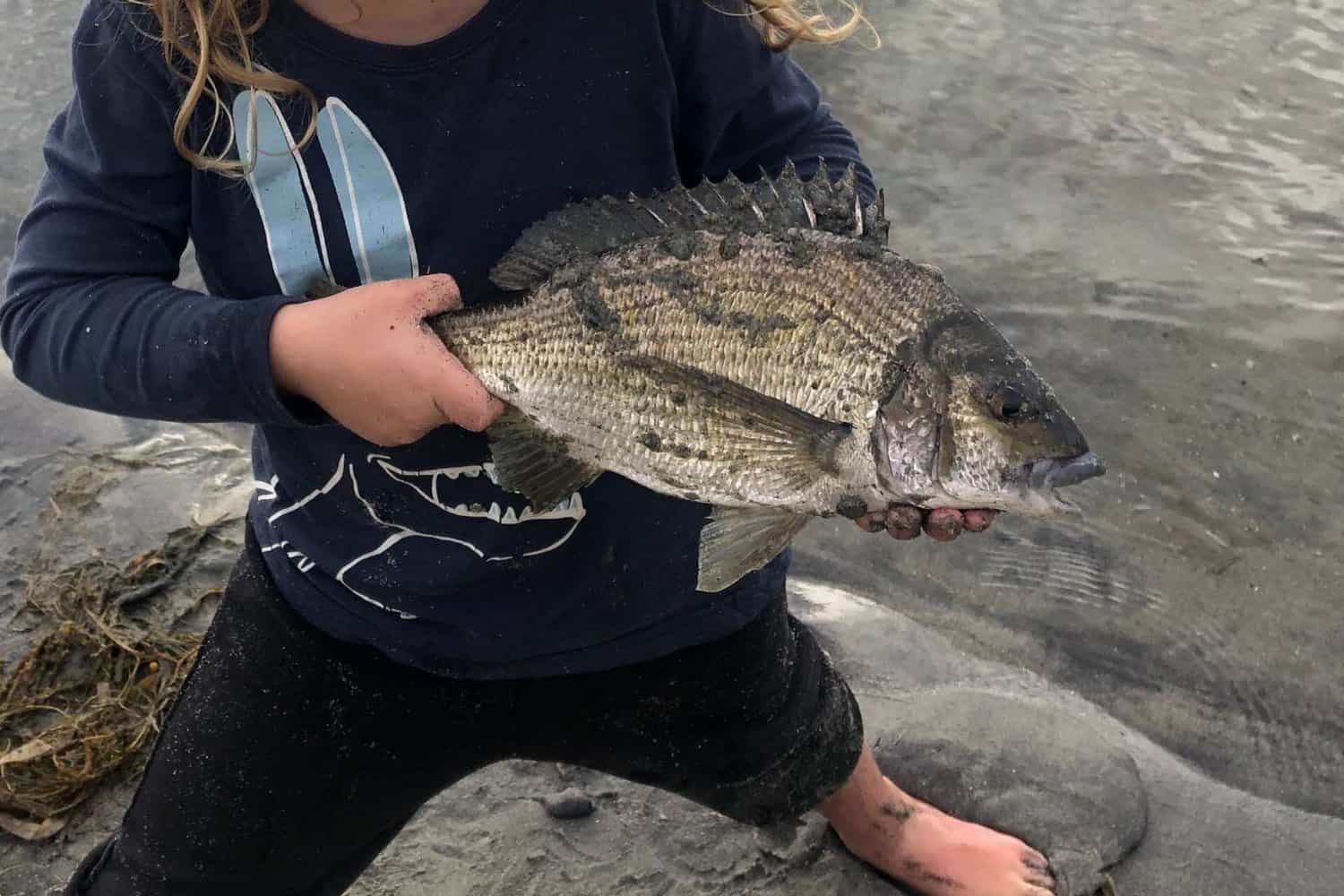
What Is A Black Bream Fish?
The scientific name of Black Bream is Acanthopagrus Butcheri and it is also known as the Southern Black Bream or Southern Bream. They belong to the sea bream family Sparidae which includes the related species tarwhine (silver bream), pink snapper and western yellowfin bream.
What Is The Range Of Black Bream?
Black Bream are found all along the south coast of Australia, from Shark Bay in Western Australia, to Ulladulla in New South Wales, as well as around Tasmania. They primarily live in estuaries, rivers and coastal lakes, generally never entering the ocean because they cannot complete their life cycle in a fully marine environment as the salinity is too high. This means that each estuary has a genetically distinct population.
Description of the Black Bream Fish
Black Bream grow to 60cm and 4kg, although commonly found smaller, and have an olive/brown upper body, silver stomach, and brown/black fins. Both jaws have teeth. They become sexually mature between two and five years of age, when they are 15-20cm long, and are known to live to 29 years of age.
Where Can I Catch Black Bream?
Black bream tend to congregate around structures such as jetty pylons, fallen stress (snags), rock bars, mangroves, pylons, oyster leases, seagrass, deep holes and boat ramps.
They are found in most Rivers and Estuaries in the South of WA, but some of the better systems are; the Murchison River, Swan River, Canning River, Murray River, Serpentine River, Collie River, Blackwood River, Frankland River and Kalgan River.
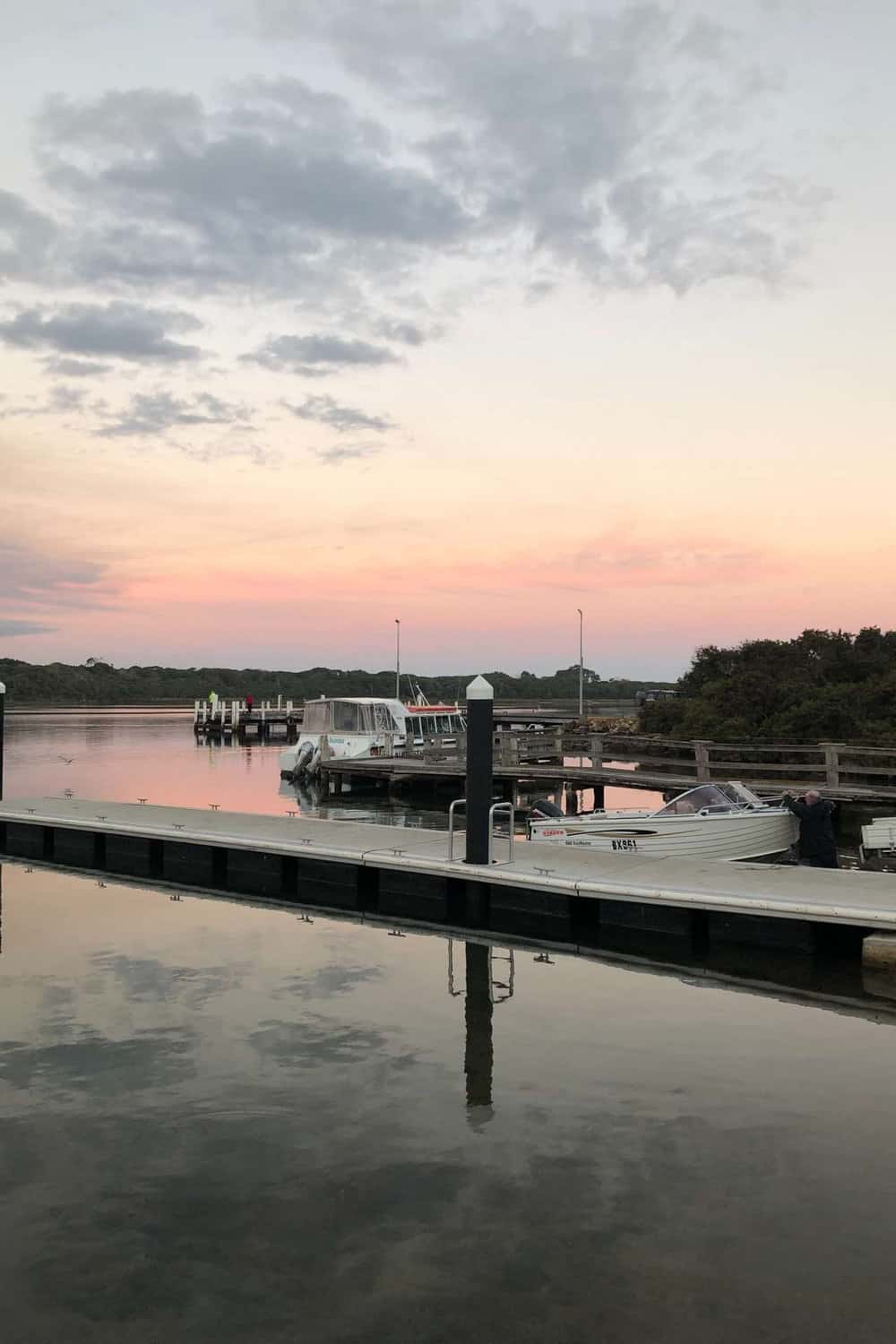
Where Can I Catch Black Bream In Margaret River?
If I were you, and I was trying to catch Black Bream near Margaret River, I would head straight down to Augusta and try off the Ellis St Jetty. We have caught them as far upstream of the Blackwood River as Alexandra Bridge, and around Molloy Island in our dinghy, but I personally wouldn’t bother going that far upstream as we have always caught them fairly easily around the Augusta townsite.
I’ve also heard from people I know that you can catch them in the Margaret River, but I’ve heard it’s not in big numbers and I haven’t tried it myself to verify. If you are in Perth, they are able to be caught in the Swan River, and you only need to search YouTube to see plenty of people having success doing this!
Black Bream Season
We have caught Black Bream year-round in the Blackwood River in Augusta, but the experts reckon they peak in WA in August and September. We have caught them on stinking hot summers day and also in the middle of winter when it is wet and windy, so personally, I think any time of the year is a good time to fish for Black Bream!
Black Bream Size Limit WA
You can keep any Black Bream that is 25cm or bigger in Western Australia, and keep 6 of them as your daily bag limit in WA, (only 2 over 40 cm in the Swan and Canning Rivers) as of June 2022, but please check the Department of Fisheries Official Site for up-to-date information. Please also keep in mind that most legal-sized fish are at least 10 years old, so remember to limit your catch not catch your limit.
Best Time To Catch Black Bream
Experts say the best time to catch Bream is usually early morning (after a Margaret River breakfast of course!) and late afternoon, however they will continue biting into the night. Our experience is that they bite any time of the day, and we generally go in the middle of the day (because….kids!) and have always found them easy to catch.
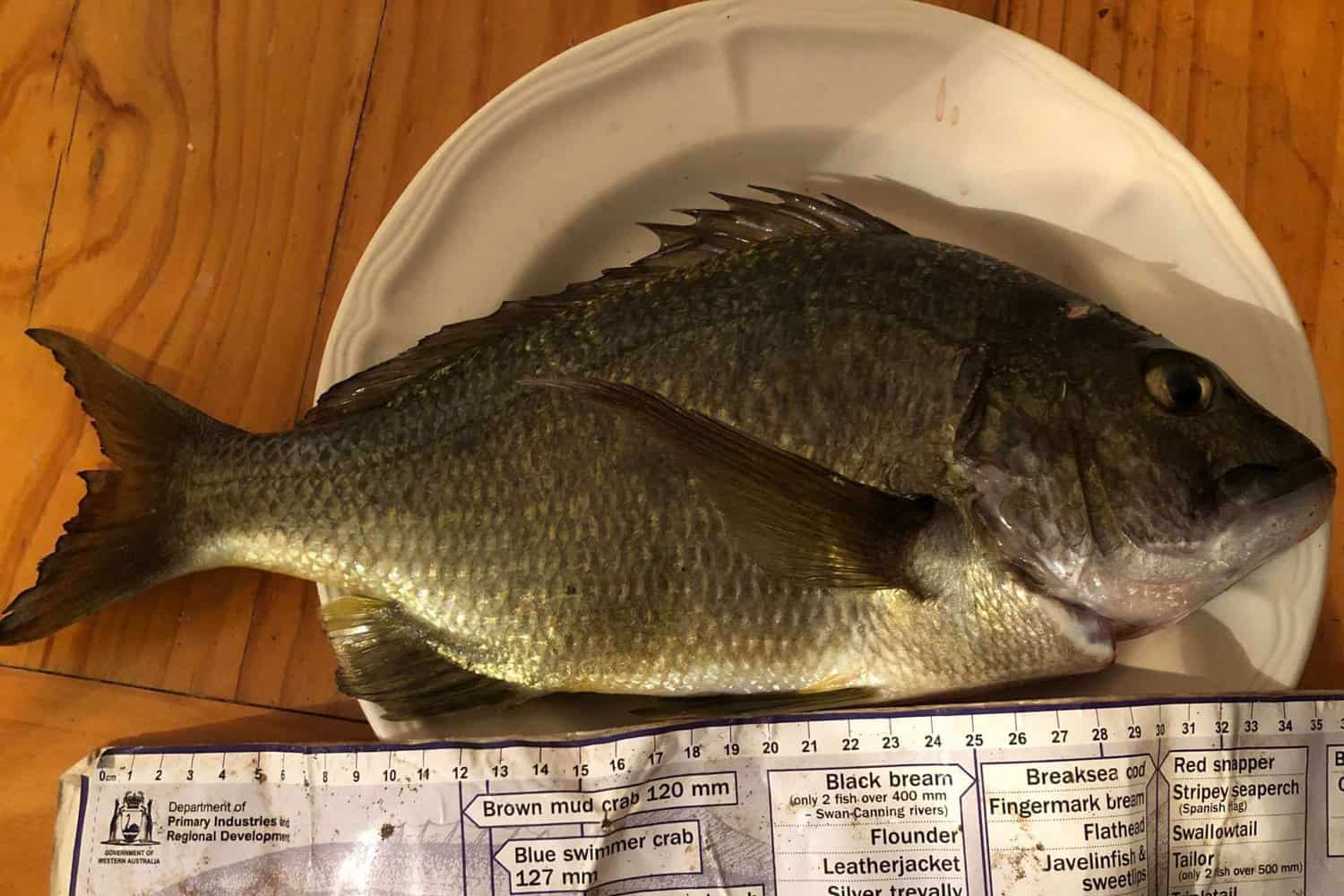
How To Catch A Black Bream Fish
Would you like to know how to catch Black Bream? The experts at Western Angler advise using a 2-4kg rod and a 3-6kg mono. You may like to have a short 6-10kg mono trace to help avoid bust-offs on any structures or snags.
I have caught Black Bream on small and large rods alike as well handlines (in fact, my son caught a 45cm Black Bream on a handline about 2m from the shore of the Blackwood River one day! We definitely put that stonker back!) so don’t let what you have to deter you from trying.
Black Bream pick up the bait and move off slowly, so give them a bit of time to do that before setting the hook.
🐟Locals Tip: All types of bream are very sensitive to light and sound so try to keep as quiet as you can.
Black Bream Bait
The best live baits to try include yabbies, prawns and bloodworms, however we have found the best bait for Black Bream to be strips of mulie. If you are looking for somewhere to get bait, try my list of camping shop Margaret River, otherwise just about any service station and supermarket can sort you out!
Black Bream Lures
While Black Bream can be caught on a variety of baits, they are often caught on lures.
The most popular type of lure for Black Bream is the soft plastic lure. Soft plastics come in a wide variety of shapes and sizes, and can be rigged in a number of ways.
The most popular rig for soft plastics is the Texas rig, which consists of a weighted hook that is threaded through the body of the lure. This rig allows the lure to be presented close to the bottom, where Black Bream are often found.
Other popular lures for Black Bream include small minnow lures, hardbodied lures, vibes and little poppers.
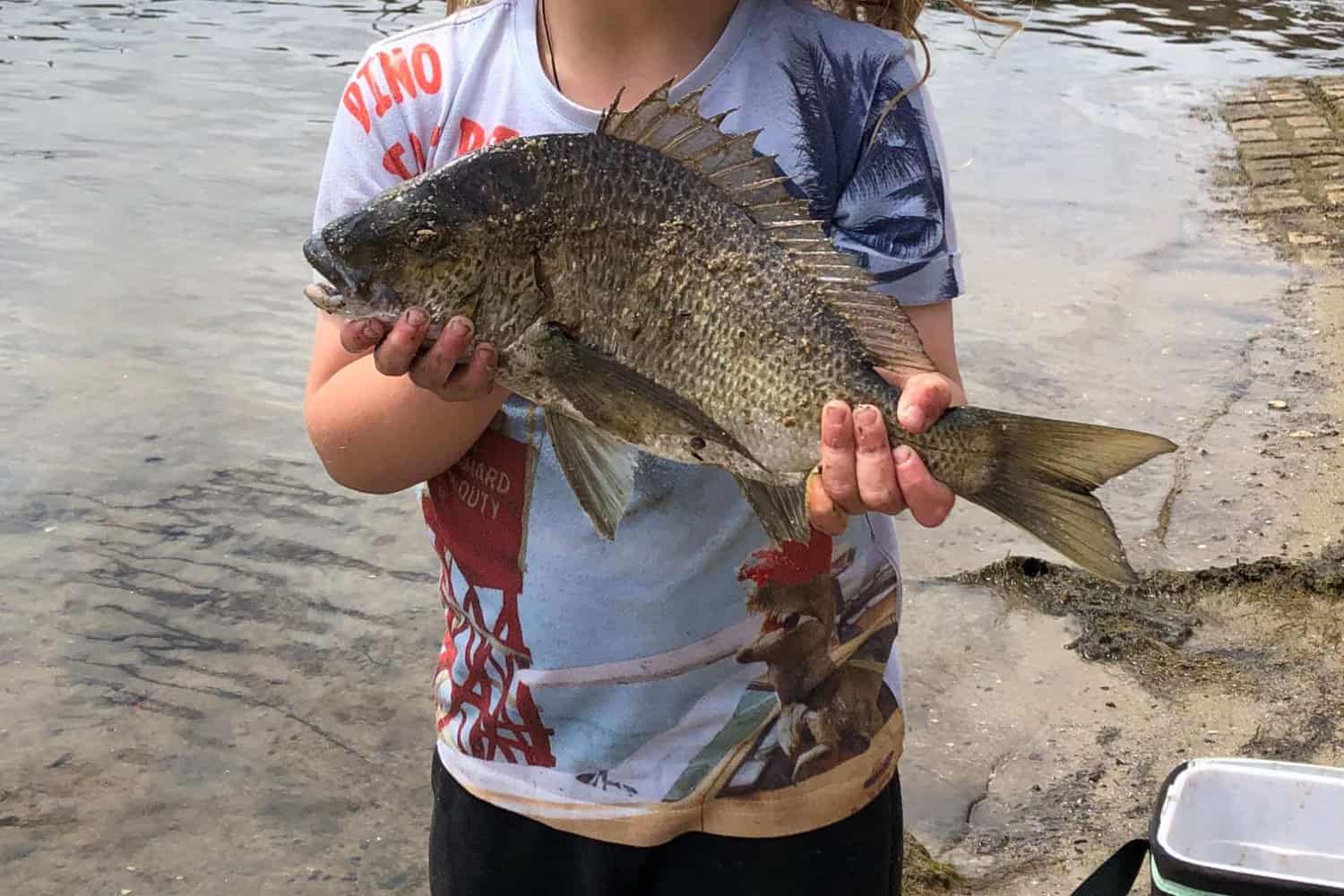
Black Bream Rig
If you’re targeting Black Bream, then you’ll need to use the right rig.
The most popular rig for Black Bream is the running sinker rig. This rig consists of a weighted sinker that is attached to the mainline above a swivel. A leader is then attached to the swivel, and the hook is tied to the end of the leader. This rig allows the bait to be presented close to the bottom, where Black Bream are often found.
The running sinker rig is not the only rig that can be used to catch Black Bream, but it is by far the most popular. Other rigs that can be used include the paternoster rig and the dropper rig. The most important thing to remember when fishing for Black Bream is to use light tackle. This fish can be very feisty, and will often break the line if too much pressure is applied. A light spinning or baitcasting outfit, paired with a light line, is the best setup for Black Bream fishing.
🐟Locals Tip: We don’t tend to use a sinker when fishing for Black Bream, but if you do, go as light as possible.
Black Bream Berley
As with any fishing, having the right berley for Black Bream is crucial to success.
Black Bream love prawns and other small crustaceans, so using a berley mix that contains these will definitely up your chances of attracting fish.
You can buy pre-made mixes from most tackle shops, or make your own by blending together some chopped-up prawns, fish scraps and breadcrumbs. Adding a little bit of oil to the mix will also help to create a nice scent trail in the water that the fish will be drawn to.
When it comes to using the berley, less is definitely more. You want to create a steady trickle of berley into the water rather than dumping in a whole bunch all at once. This will keep the fish interested without overfeeding them and making them uninterested in your bait.
Start with just a small handful of berley in a berley pot or bucket, and add more as needed throughout the day.
🐟Locals Tip: We always forget to use berley and we still catch fish. So, if you forget, or can’t be bothered, don’t give up hope! I’m serious, we pretty much never use it!
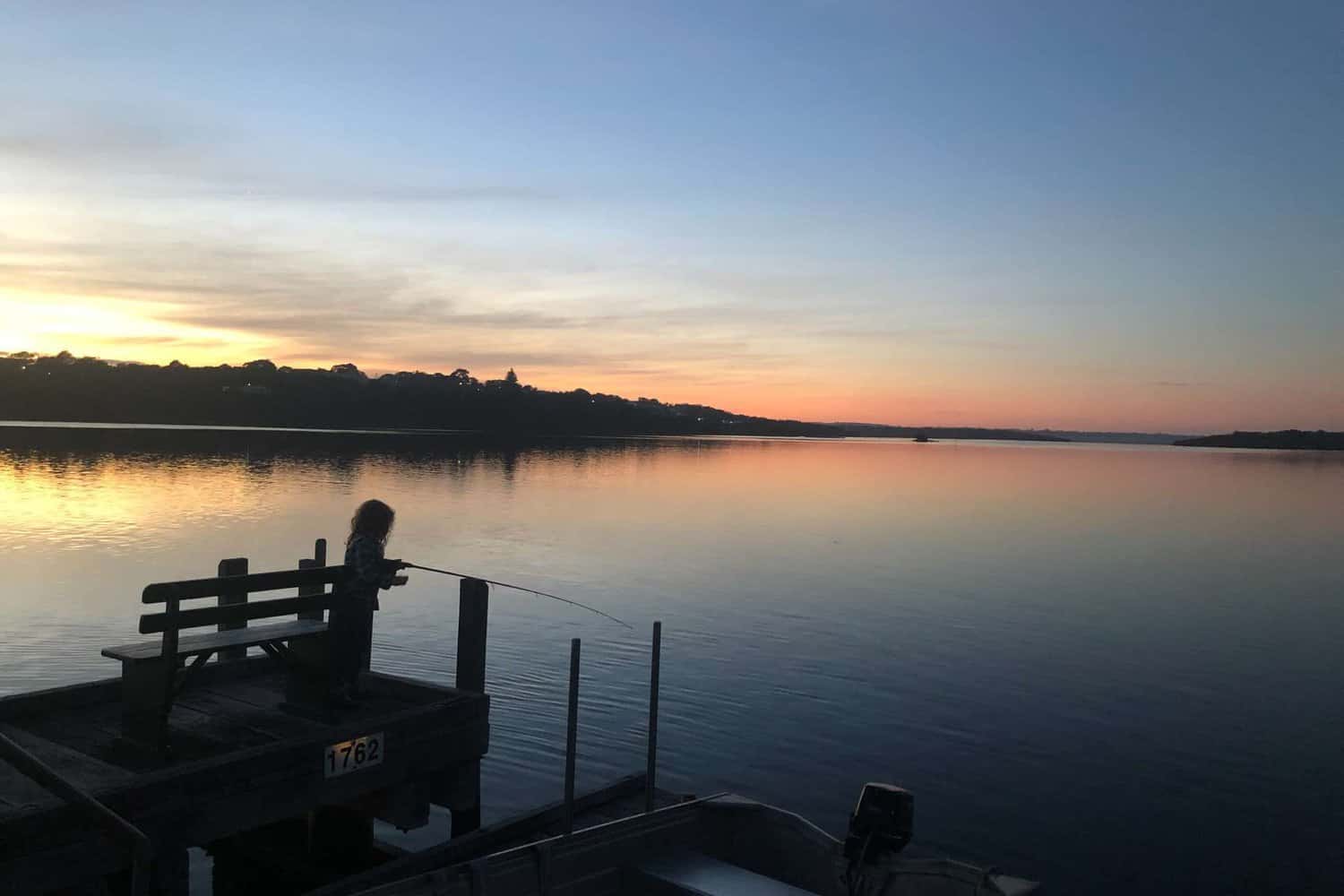
How To Fillet Black Bream
Would you like to know how to fillet Black Bream? It’s important to know how to fillet Black Bream correctly, so you don’t waste your catch, and you can get the most out of it. Make sure you’re wearing a safety glove on your non-cutting hand, and you have yourself a nice, sharp filleting knife.
These are the steps to follow;
- Holding the head in your non-cutting hand, place your knife behind the pectoral fin at a 90-degree angle to the backbone, and cut down behind the head, cutting halfway through.
- At this point, place your non-cutting hand firmly on top of the fish, and turn your knife down towards the tail at a 45-degree angle and cut, following the backbone where the fin is.
- Now you have your first fillet, cut the rib bones off.
- It’s best to take the skin off your Black Bream, to do this, grip onto the tail end of the fillet, and slide your knife between the fillet and the skin, heading in the direction of where the head would have been. It should come off quite easily.
- Repeat on the other side and you’re done! Two delicious Black Bream fillets, ready to cook.
There shouldn’t be any bones, but if you’re giving this to small children, it always pays to double-check.
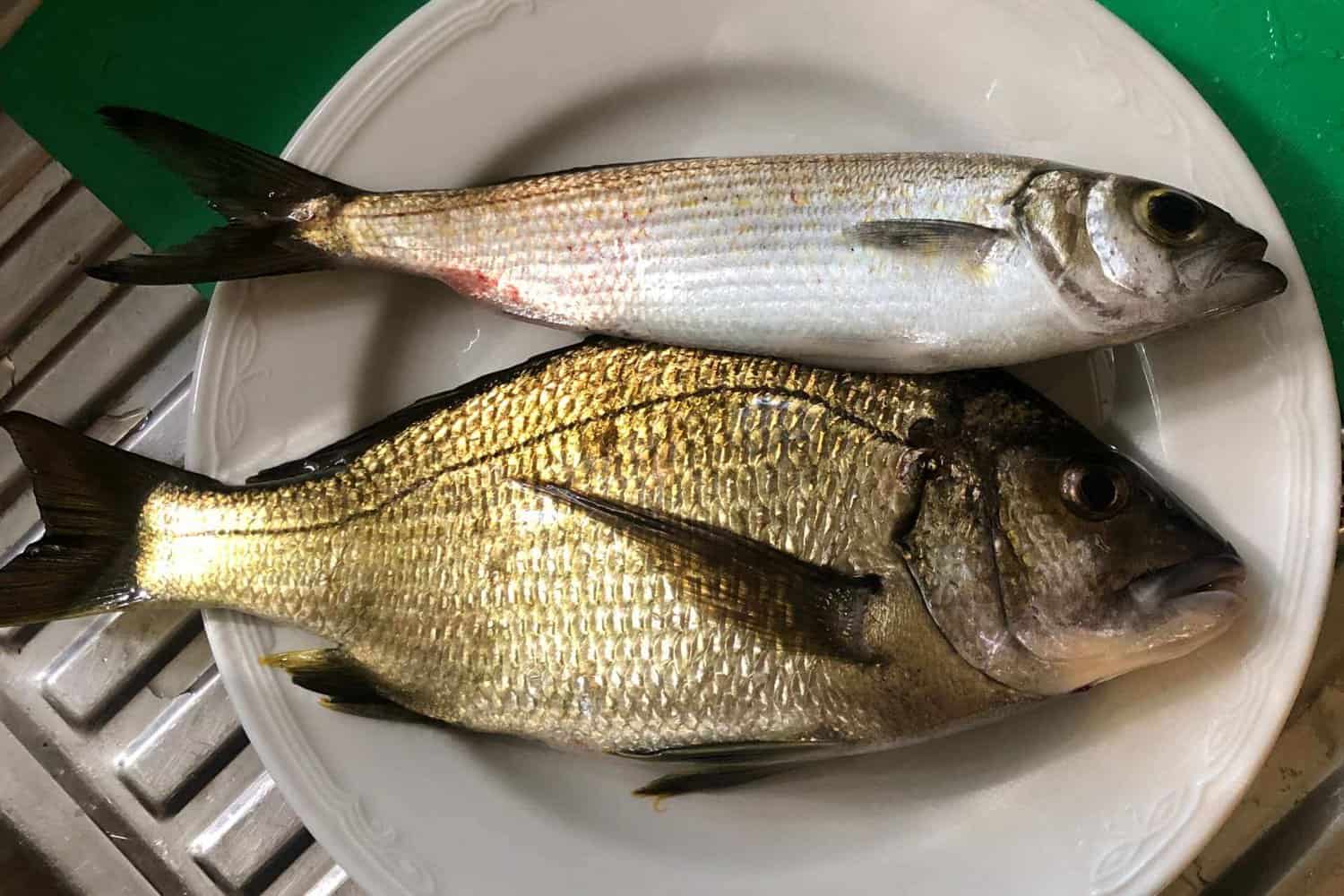
How to Store Black Bream
Scale, gill, gut and clean your Black Bream before wrapping the whole fish and fillets in plastic wrap or keep in an airtight container. Black Bream can be stored in the fridge for 3 days, or freeze whole fish for up to 6 months and fillets for up to 3 months.
What Does Black Bream Taste Like?
Black bream have a delicate, sweet flavor with low oiliness. When cooked properly, their flesh is white and flaky with a moist texture. Black bream are considered a delicacy in many parts of the world and are often served as part of fine dining meals.
How To Cook Black Bream
While their flavor is delicate, Black Bream are also very versatile and can be cooked in many different ways. They can be baked, grilled, fried, or even steamed.
Our favorite way to eat it is to take the fillets, dust them in flour, then drop them in an egg wash, before coating them in breadcrumbs, then shallow frying them. My kids like them squeezed with lemon, then dipped in a “secret sauce” of mayo mixed with tomato sauce.
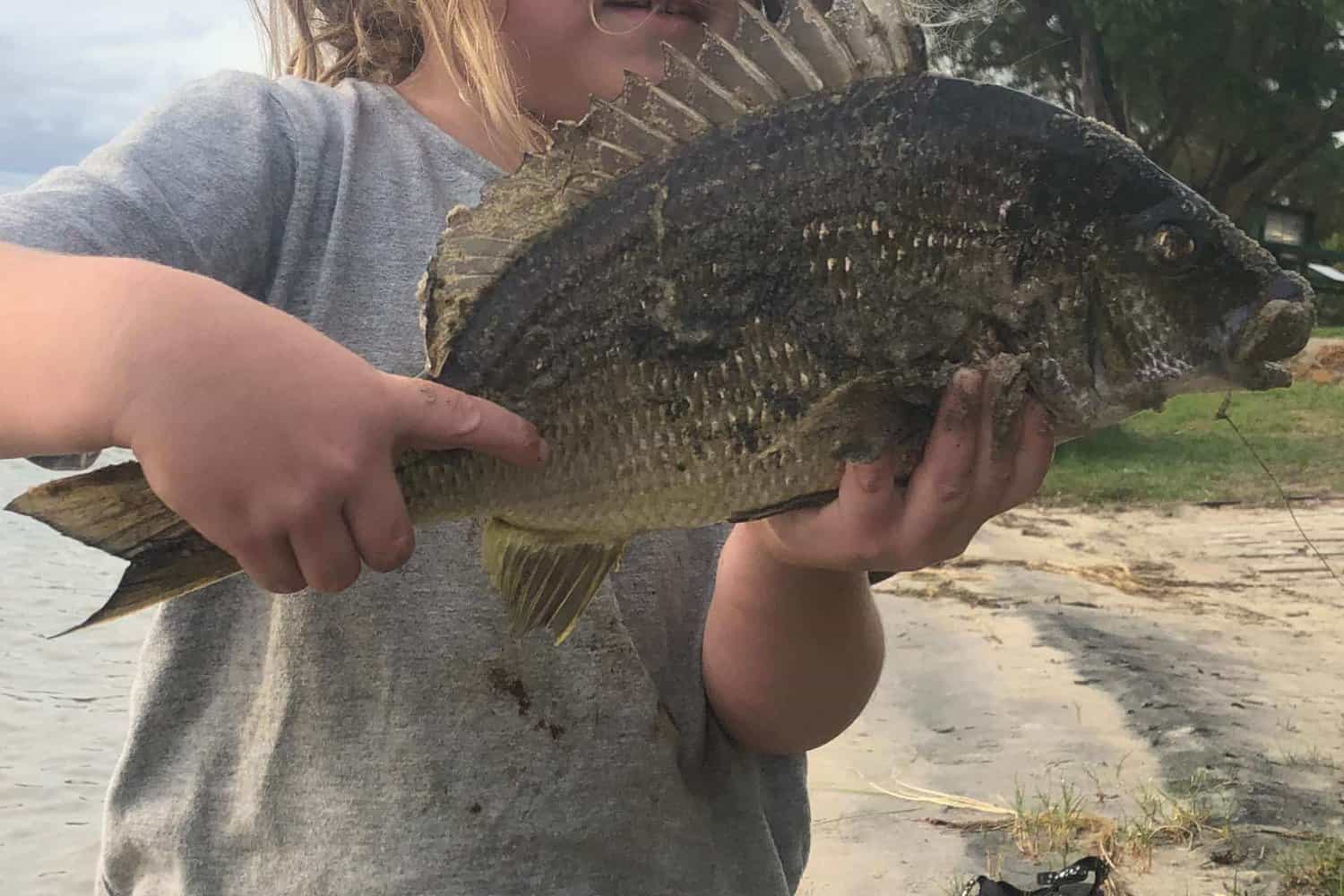
Black Bream Recipes
Are you looking for some inspiration on how to cook your fresh catch? Below are some ideas on how you can cook your Black Bream.
- Paul Cooper’s Black Bream With Choucroute & Red Wine Bearnaise
- Steamed Whole Bream With Green Chilli & Coriander
- Bream With Vietnamese Salad
Do Black Bream Have Bones?
Yes, Black Bream do have bones. However, these bones are very small and delicate, and can easily be removed from the flesh. This makes Black Bream an excellent choice for those who are looking for a fish that is easy to eat.
Are Black Bream Good To Eat?
Yes, Black Bream are good to eat. Their delicate flesh has a mild flavor that is similar to that of other popular eating fish, such as snapper and flounder. Black Bream are often considered to be a healthier alternative to other types of seafood, as they are low in mercury and other contaminants.
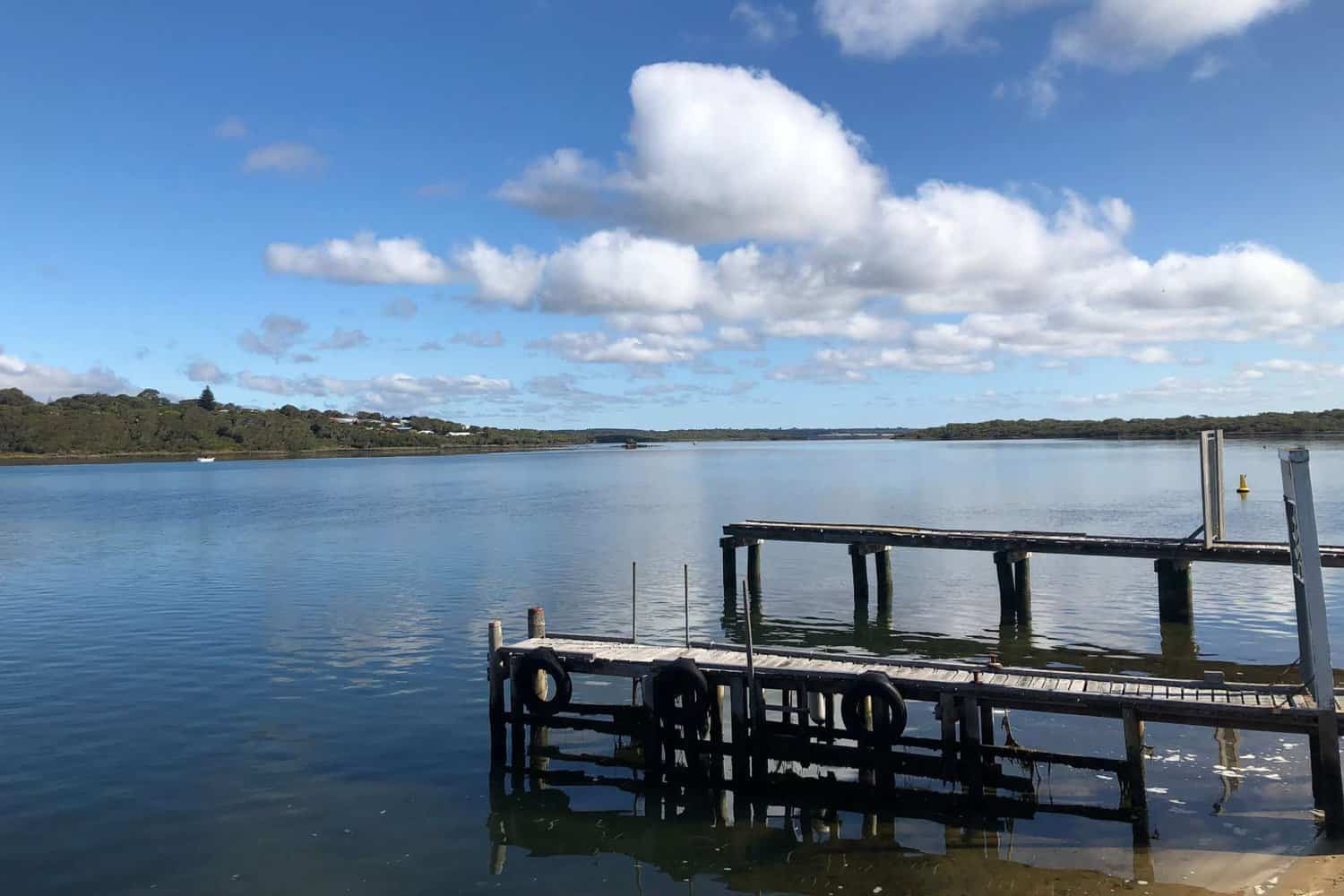
Wrapping Up: Black Bream Fishing
There you have it! Everything you need to know about Black Bream! Catching Black Bream is great fun, and an enjoyable hobby we do together as a family. I hope this guide has been helpful and that you’ll consider adding them to your menu this year.
Read More on Fishing:
